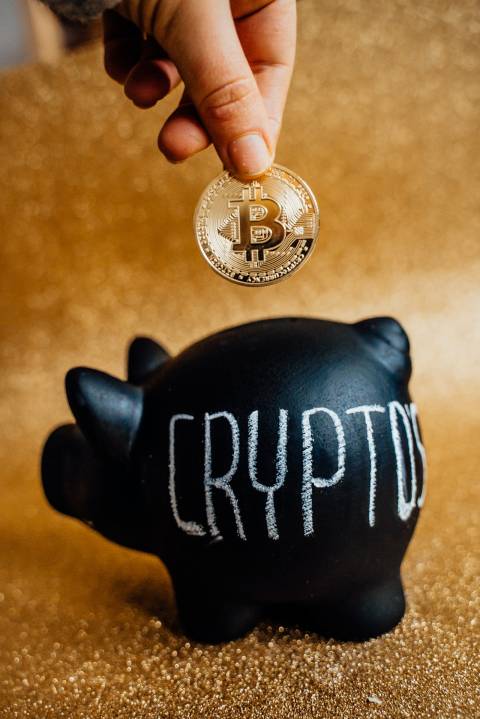While 2020 may be remembered for being the year of the global COVID-19 pandemic, 2021 has quickly shaped up to be something else entirely: the year of the meme investor. From the initial rise of these so-called “meme stocks,” to the sudden uptick in what is now being dubbed “meme cryptocurrencies,” gone are the days of the reliable and trusty Wall Street trades. Instead, they’ve found themselves somehow replaced by the more surreal and absurd social media-vetted stocks and cryptocurrencies. A curious and wholly unprecedented development, this shift has markedly altered the landscape of modern investing.
The Unexpected Rise of the Meme Crypto: Its Role in Tomorrow’s Trading
While these recently-favored meme trades have certainly surged in demand, this phenomenon should not have been entirely unexpected. After all, the advent of the meme (that is, using images to describe a thought or a mood) has also grown in relevance in recent years.
Thus, it was only a matter of time that today’s millennial traders would take this irreverent means of communication and somehow find a way to turn it into an investment. Nevertheless, while meme stocks and cryptos are steadily on the climb, they are still an enigma to those who aren’t in the know.
What are meme securities?
What exactly are these meme securities, and why have they suddenly become the preferred gamble of choice for the online generation? Where did they come from, and will they continue to remain relevant in the coming months? The answers to these questions aren’t exactly set in stone, much like how the “normal” stock market is just as equally unpredictable and volatile.
However, by shedding a little bit of light on this bizarre turn of stock and crypto events, we can ideally start to better comprehend their impetus and what it means for the rest of us traders.
A Brief History Of Memes
In the literal sense, a meme is simply the transfer of ideas or concepts from one person to another. Coined by evolutionary biologist and author Richard Dawkins back in 1976, the word itself has shifted and changed throughout the years — rather, evolving, so to speak. Once denoting how an idea can move socially, the meme now represents graphics or images that symbolize a shared sentiment.
Often viral in nature, memes tend to proliferate quickly among internet users. While the term itself came about only in the past fifty years, however, the concept of the meme far predates that.
Where is the first official meme?
While the infamous “dancing baby” is considered the first official meme, in reality, memes have been around far longer than the novelty 3D animation. Take, for instance, the schoolyard hand-clapping games typically played by young girls. Those are classic memes.
What about the tendency for artists to include macabre relics such as skulls and ghostly apparitions in their art, called “memento mori” (or, literally, “remember that you die”)? These are also memes. Indeed, the meme is as ubiquitous as humanity itself.
Despite seeming like a relatively recent internet invention, the world wide web should not be credited for its inception, but rather, for its spread.
What Triggered the Sudden Influx in Meme Trading?
The mysterious uptick in these meme stocks seemed to manifest almost overnight, blindsiding the majority of Wall Street traders and leaving them fumbling for purchase — both literally and figuratively.
The pet stock that suddenly found itself literally vigupling (that is, growing by over 20x) from the beginning of January to the end of the very same month was none other than GameStop, or GME. At the first of the month, the stock was trading at about $17.25 per share. Yet, by the end of the day on January 27 — barely three weeks later — it found itself closing at $347.51. What happened?
The short squeeze…
A short squeeze happened, thanks to the cunning maneuvers of the users of a popular subreddit message board called “Wall Street Bets” (or WSB). Spurred on by the encouragement from an investor by the name of Keith Gill (who went by “Roaring Kitty” and other, more colorful pseudonyms on his other social media accounts), GME reached unprecedented highs, followed by devastating lows.
The stock rallied again, then dipped, then rallied once more. While it still hasn’t returned to its peak trading highs back from January 27th, much of its incredible growth could be attributed to something called a “short squeeze.”
In brief, the stock spiked because a significant portion of short-sellers realized they needed to jettison their shares and cut their losses. Thus, GME was the perfect storm for the traders on WSB to take advantage of — and take advantage they did. Because a great number of short-sellers had borrowed so much stock, once the price started to rise, they decided to close their positions (or, in other words, buy the stock) to minimize the damage to their portfolios.
Since they all seemed to move in unison, the rising price and the released shares caused a short squeeze. Because of this, many people became handsomely rich due to the trade, and many more lost quite a bit of their investment.
The distant memory of GME
Today, GME is all but a distant memory for most of WSB’s traders, who affectionately call one another “smooth brained apes.” Many were left high and dry on the investment, having purchased it at its high. However, many more reaped a bountiful reward on their investment, pocketing a great deal of money from their timing on their moves.
While GME traders have since moved on, setting their sights on other securities, the lingering repercussions of their short squeeze of GME are still felt today. And, of course, the concept of the “meme stock” was born.
A Spotlight On Today’s Meme Cryptos
Not long after the Wall Street Bets and GameStop fiasco, the eager public soon trained its eye on the cryptocurrency market.
While the majority of the crypto market is dominated by more conventional, publicly-traded cryptocurrencies such as Bitcoin (BTC) and Litecoin (LTC), the smaller, more niche cryptos have slowly managed to eke out a space for themselves on the trading platforms.
As a sort of natural segue from meme stocks, these younger traders didn’t waste any time considering an investment in meme cryptocurrencies.
Modern meme crytocurrencies
In a way, all modern cryptocurrencies have a sort of meme culture built into them. Unlike conventional stock markets, which go back as far as 17th century Amsterdam, cryptocurrencies have always been an internet-based trade.
Established in 2008, Bitcoin is largely recognized as the first official cryptocurrency. The origins of this crypto still remain fairly mysterious, and the first knowledge of it came from a paper published on a public message board called, Bitcoin: A Peer-to-Peer Electronic Cash System.
In 2009, the Bitcoin software was made available to the public, and mining for bitcoin became possible. A monetary value was assigned to it in 2010, and in 2011, the first competitors for it emerged.
Where did cryptocurrency come from?
However, while Bitcoin was the first one to actually take off and flourish, the concept of cryptocurrencies far predates it. An American by the name of David Chaum first introduced the idea of a cryptographic currency system in 1983, with “eCash.” Blockchain technology soon followed, presented by Stuart Haber and W. Scott Stornetta in 1991 as a means to document immutable timestamps.
DigiCash
In 1995, Chaum presented DigiCash to the public, but the word “cryptocurrency” itself wasn’t even uttered until 1998. It took a computer scientist by the name of Wei Dai to come up with the Crypto++ library and the b-money system and the notion of decentralizing it.
Today, there are over 10,000 different varieties of cryptocurrency and of them, over half are suspected to be “meme” coins.
Original meme crypto
The original meme crypto, known as “Dogecoin (DOGE),” was actually invented as a joke. Founded in 2013, it was meant to be a sort of foil to the more seriously traded cryptocurrencies. Instead, it managed to remain mostly hidden from the public view for many years, and only started to gain traction when entrepreneur Elon Musk started tweeting about it. Now a surprisingly popular cryptocurrency among investors, other meme cryptos are slowly starting to follow suit.
Dogecoin’s moment in the sun has undoubtedly paved the way for other meme cryptocurrencies, such as Shiba Inu (SHIB, the alleged “Dogecoin killer”) and the appropriately named Meme (MEME).
Indeed, the sudden interest in these crypto coins has made millionaires out of many, such as one pair of intrepid brothers out of New York, whose shrewd investment in SHIB netted them a cool $9 million on their initial $8,000 investment. Other traders have seen similar returns on their investment, underscoring how just because something was introduced as a parody, it doesn’t necessarily mean it’s worthless.
What sets meme crypto apart from other cryptos?
However, despite the growing interest in these meme cryptocurrencies, what sets meme cryptos apart from more legitimate cryptos? In a word, their function.
Mainstream cryptocurrencies were originally intended to address many of the underlying issues with our existing currency exchange, allowing for a universal type of money that all vendors would accept. Furthermore, one of its primary goals was to promote decentralization and bolster industries that also accepted it. Thus, it would work and act like real money, but still function in a fundamentally different way.
Meme crypto, however, serves no such purpose. While they certainly can be used as a type of currency, they’re a more tongue-in-cheek type of capital. Unlike Bitcoin, Ethereum, and Litecoin — all of which serve a purpose to those who utilize them — these meme coins had less lofty goals. They were simply created on the larks of their inventors for no more than a laugh and a means to turn a quick profit.
While many of these crypto coins have certainly garnered a significant amount of attention, whether it’s due to a celebrity endorsement or resounding praise in a particular media, there is no real logic to their elevated prices. Instead, hype, and little more, has driven their value.
This doesn’t mean they’re worthless, though. Just like the value of a security on the stock exchange is strongly influenced by the price a retail investor is willing to pay for it, much of the same can be said about these meme coins. Are they inflated beyond what could be reasonably expected? It’s possible. That doesn’t necessarily mean they’re worthless, though, and to those who are buying and “HODL”-ing them, it could very well signify a long-term investment rather than a quick day trade.
HODL
And HODL they will continue to do. Even the word “HODL” is derived from a meme source, a silly typo from an online message board user who staunchly defended his position after the price of Bitcoin dropped. Spurred by the sudden decrease in price following talks about regulation, the user declared to the other members of the Bitcoin message board: “I AM HODLING.”
While he eventually backtracked and tried to fix the words typed by his clumsy fingers, the sentiment itself remained. Just as WSB has its own terminology for holding (dubbing it “diamond hands”), “hodling” seems to be a relatively self-aware strategy for those who dabble in crypto.
A Word (or Two) on Regulation
These days, there appears to be no end in sight for the ever-fluctuating crypto market. Many people still continue to invest in it, including both the long-term buyers and the opportunistic profit-takers. Nevertheless, there have been rumors that the introduction of regulation will signal the death knell for all cryptocurrencies, memes and the more serious coins alike.
Crypto is no stranger to this, and much of this speculation has been triggered by commentary from China, which has vocally entertained the idea of regulating the crypto market. This isn’t the first time they have done this, though, and it likely will not be the last.
In fact, the meme of HODLing itself arose out of talks of regulation and caused one of the first major dips in Bitcoin back in 2013. Bitcoin was able to recover that time, but will it be able to do so again? The crypto market is currently fairly unsteady, with many investors releasing their portion amid uncertainty about the future of these crypto trading platforms.
Furthermore, the Chinese government has indicated that it does not like how unstable and speculative the cryptocurrency market is. It has suggested that virtual commodities like Bitcoin are not legal tender and therefore should not be used.
What about regulation?
While China has still yet to issue any formal edicts pertaining to Bitcoin and other cryptocurrencies, the market continues to remain considerably down in recent months. Will regulation spell the demise of the cryptocurrency market, essentially nullifying both the meme cryptos and the more legitimate ones? This remains to be seen, but the current climate should come as no surprise, as this isn’t the first time the Chinese government has issued strong words about crypto.
One thing is for certain, though. The cryptocurrency market remains relatively undaunted in light of these talks, despite its current downturn. Just as it has rallied before, there’s still a strong likelihood that in tomorrow’s bullish market, it will rally again.
Recognizing the Importance of Due Diligence
The idea of becoming a crypto millionaire is an incredibly alluring one, and it’s a fairly common fantasy of many investors to hit it big on one single investment. Indeed, many people have found themselves becoming quite wealthy on their investments, in both the meme and the more typically traded securities. These tales of sudden affluence are our generation’s fairytales. It’s not unlike a Cinderella story of sorts, an inspiring rags-to-riches parable of being in the right place at the right time.
There’s something rather enticing about the idea of inserting a few coins in the market slot machine and pulling the lever to be rewarded with a nice return on investment.
It’s important, therefore, to be especially careful about performing one’s necessary due diligence.
Just because someone may have what seems like a reliable tip about a possible investment, it doesn’t necessarily mean that the said security will automatically make one become affluent. Above all, nobody should ever invest with money they can’t afford to lose, and the risk of losing it all is fairly significant.
Yes, many people have gotten wealthy from the fortunately-timed purchase of stocks or cryptocurrencies, but many more have lost it all. The more modest, less dramatic investments seldom get air time, yet those are the ones that tend to be more profitable.
Furthermore, it’s important to be aware of the health risks of investing.
Trading crypto, like trading stocks, can be incredibly stressful. Research has shown that elevated stress levels can impact circulating cortisol in the body, which can be devastating for both men and women. For instance, it can reduce a man’s testosterone, leading to lethargy, apathy, and even depression. Testosterone in women can also be impacted, as cortisol is a hormone, negatively influencing her reproductive cycle and mental health.
Due to these risks — and because of the very real chance of losing hard-earned capital — the importance of carefully vetting any cryptocurrency cannot be overstated.
Are Meme Cryptos Here to Stay?
With so much uncertainty surrounding these meme stocks, it’s understandable to wonder if they’re just another passing fad, or if they’re actually going to be viable in the next few years.
While the crypto market is still a fairly novel trading platform, the evidence seems to suggest that these currencies won’t be fading into obscurity anytime soon. After all, the widely-held opinion seems to indicate that they are still quite relevant, which seems to be one of the major drivers of their success. Nevertheless, there is still an admittedly stark difference between the more legitimate cryptocurrencies and the trendy meme coins.
Who drives the markets?
Unfortunately, there’s no easy way to answer such a question. After all, markets are primarily driven by the buyers, and there appears to be an elevated lingering interest in these cryptos. While this can easily change, as many investors are a notoriously fickle bunch, it doesn’t seem likely to happen any time soon.
Whether one has a modest position in BTC, or they aspire to be the next SHIB millionaire, the future is still fairly vague.
However, one thing is for sure: these meme cryptos are in high demand today, and the amount of investment capital required for entry is surprisingly low. Indeed, perhaps the next meme crypto millionaire is already out there — and they just don’t know it yet.
Image Credit: aleesia kozik; pexels; thank you!

























